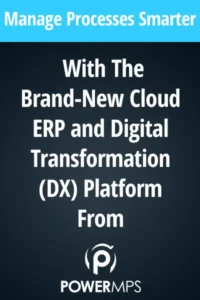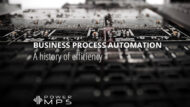Data has always been essential to running a business, especially when it comes to the financial side of a company. Tracking materials usage and time spent on projects or tasks has always been a struggle for accounting departments. However, Big Data has made it much easier to set up programs and systems to assist in tracking items essential to fully developed financials.
The beginning of this type of tracking was embedded in the use of firewalls and servers. IT used these tools to block access to websites and services that were deemed unsafe or distracting. It also helped keep tabs on what and how employees were using their time and equipment.
Now, however, with an ever-growing remote-work environment, companies are moving beyond the standard in-house tracking. Instead, they are beginning to implement project management software like Monday. More intensive clock-in and clock-out tracking systems like Toggl are also a common alternative. However, businesses with significant security concerns and stringent compliance or regulatory requirements have begun to migrate to all-in-one screenshots, website usage, and time-tracking systems—programs like Time Doctor or Clockify. But, no matter the software or methods being used, businesses can now fully monitor and track the work and time of each of their internal and remote workers.
For finance departments, the introduction of these systems means easier tracking and categorizing of employee time. It helps them tabulate hours spent on individual projects and apply costs to specific areas throughout the business. However, despite more advanced tracking capabilities in the realm of the employee, there are back-office and overhead expenses that are still tough to trace, such as printing.
The Printing Expense Dilemma
Many may argue that printing costs are very easy to tabulate. But printing industry experts such as Managed Print Services providers know the actual costs of printing go far beyond the equipment and supplies. How much a company pays to purchase or lease a printer or spends on paper and toner are only the surface expenditures.
 The truth is that, for every $1 spent on office printing, another $9 is paid to manage it. This expense is created by IT management, infrastructure, and support. While the Information Technology (IT) group may lump print in with the rest of their general office assistance and structure, analysis proves it takes up far more time and energy than anyone would like to believe. Most businesses report 40% of their help desk calls and tickets are print-related when thoroughly evaluated. And these ongoing print problems can require anything from basic assistance such as supply replenishment or jam assistance to a repair call.
The truth is that, for every $1 spent on office printing, another $9 is paid to manage it. This expense is created by IT management, infrastructure, and support. While the Information Technology (IT) group may lump print in with the rest of their general office assistance and structure, analysis proves it takes up far more time and energy than anyone would like to believe. Most businesses report 40% of their help desk calls and tickets are print-related when thoroughly evaluated. And these ongoing print problems can require anything from basic assistance such as supply replenishment or jam assistance to a repair call.
But IT is not the only department affected by office print management. Equipment, toner, ink, and paper supplies all fall on the administrative and procurement departments. Ensuring these items are appropriately sourced in a timely manager often requires inventory regulation. Larger offices may even require regular reports on print dispense and ink levels. In some cases, this information may involve direct contact and inspection of the print equipment’s stored data.
Add to all of this the need to provision and upkeep on-site (and now remote and at-home) printing facilities; it does not seem unreasonable for print management to encompass such a staggering hidden cost. Yet nearly half (40%) of North American businesses cannot accurately track print and print management expenses. As a result, most companies spend a great deal more than they should to provide these services to their employees. A typical business spends up to 3% of its annual revenues on office print services.
Managed Print Services – Solution To Print Costs
Seeing such a cost analysis, finance departments might immediately attempt to steer their company toward a paperless environment. Indeed, many organizations have been working hard toward the vision of a completely digital office. But studies have shown paper is still an essential feature for employees and security. Fortunately, there are ways for businesses to provide finance with the data attributions they desire while significantly lowering the overall costs of business office print.
Managed print service (MPS) providers consolidate administration, printer helpdesk, and maintenance into one package. As a business that is wholly focused on providing printer services, equipment, and supplies, they can leverage their industry knowledge, experience, and volumes to help reduce wait times, resolve issues, and lower supply costs. Overall, MPS services can reduce overall printing costs by up to 30%. The cost-savings to print-related helpdesk tickets and calls alone range from 7-14%.
MPS providers using business process automation systems like PowerMPS offer even more data and cost savings. These platforms provide MPS customers with easily accessible data on print volumes by printer, location, and current supply levels. This information can be accessed from the comfort and safety of the home office – for even remote office and connected desktop printers.
MPS using PowerMPS systems can provide an in-depth look at supply usage for those finance departments demanding even more convenience and cost savings. And there are ample time savings with predictive supply ordering technology and online maintenance management.
Finance departments in businesses across North America might be at a disadvantage for tracking and understanding their actual office printing spend. But, just like there is a growing service and software space for proper employee time management and attribution, there are solutions for the enterprising finance team. When it comes to tracking and management for print, these companies should take a hard look at partnering with a reputable MPS provider – especially one galvanized by an authoritative tool such as PowerMPS.







